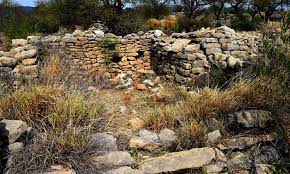Tulaja fort in Khushab to be conserved under Rs 30m project
Punjab government has decided to undertake conservation and archeological excavation of a centuries old monument, the amazing Tulaja fort that rest on a plateau on top of a hill in Khushab district.
Tulaja fort that had remained hidden from the public eye with several untold stories, is a combination of different ancient structures built with varying sized carved or chiseled stone bricks/blocks that rest on the 22-acre plateau on top of a hill in Khora village of Soan valley, some 34 kilometers away from Khushab city and can be accessed through an 8km Katcha road from Soan-Skaisar road.
It naturally looks like a fort with a side giving the look of a fort wall for being steep. Punjab government has approved PC-1 for conservation of Tulaja fort foreseeing its potential to emerge as a tourism attraction once it is conserved and tourism-friendly facilities put in place, In charge archaeology department Multan Malik Ghulam Muhammad told APP.
Under the Rs 30 million project, buildings department would develop a jeep able track, almost 1.5 kilometer long from the bottom to the top to enable tourists find the amazing plateau with smaller one-room structures made of stone bricks and blocks and the bigger sized structures having more than one room, scattered there.
A hiking track, separate from the jeep track, would also move from bottom of the hill to the top like a spiral with railings on the edges for tourists safety. Both tracks would have sign boards for guidance and safety of tourists.
Locals believe, the monument was once availed as a refuge by Sultan Jalaluddin Khwarizm in the wake of battles with mongol army. Ali Usman Baig, a civil engineer by profession but a tourism enthusiast, quoting a travel writer Salman Rasheed, narrated on his web pages that after the defeat of his father Alauddin Muhammad II in 1220 by Genghis Khan, Jalaluddin Khwarizm took over the command and defeated Mongols at the battle of Parwan, north of Kabul.
He, however, was forced to flee to India and had to jump into river Indus with his remaining soldiers after losing most of his army in battle of Indus against mongols. In 1221, Jalaluddin passed through this area and befriended a local chieftain Rai Sangin of the Khokhars.
Rai Sangin took Jalaluddin to a hidden fortress which Jalaluddin named as Samarqand in memory of his hometown. Later, The Khokhar chieftain married his daughter with Jalaluddin and shifted him and his army to Tulaja fort.
The name Tulaja means Indian goddess of mercy and slayer of evil which suggested the name might have been given to the monument in Hindu Shahi period but nothing can be said for surety, Ali Usman Baig narrates.
Many believe Tulaja fort was 5000 years old but some say it could be around seven centuries old. Archaeology department officials said that the excavation and exploration they are planning to undertake should reveal the truth.
Officials said that buildings department has been allocated a sum of Rs 19.839 million while the rest of the Rs 10.161 million to be utilized by the archaeology department.
Country’s renowned archaeologist, Deputy Director Archaeology (South) Muhammad Hassan and his team would undertake the archeological investigations i.e exploration and excavation.
Under the project, wild growth of bushes would be removed, heavy stone blocks that are 4-5 feet long, almost two feet wide, and 8-12 inch thick, would be stacked together through masonry work after proper survey, documentation and drawings to rebuild the damaged stone structures. History boards would be installed at shrine of Baba Kachchaywala at the foot of the hill and the other at the plateau.
Historically important remains to be found there would be documented. A supervisor and sub engineer would be deputed for two years for project completion. Public toilets would be built at the shrine with a solar system to lift water either from the ground or from the nearby spring. Around eight gazebos would also be developed at the shrine and at the top. Buildings department would also investigate possibility of making water available at the plateau.

